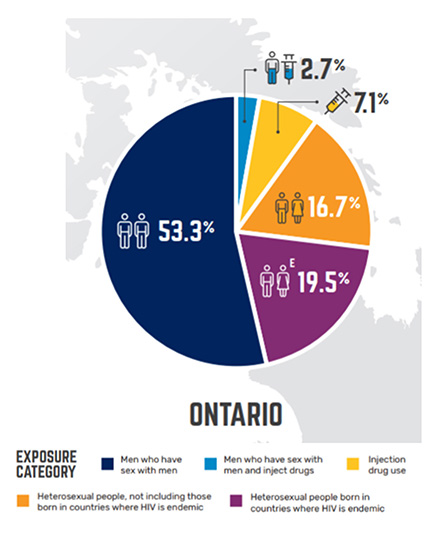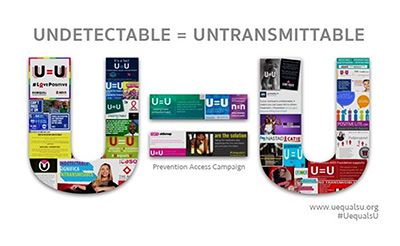HIV: Strengths-Based Approaches Can Help Us Reach UNAIDS 90-90-90 Goals
By BA Laris, MPH | February 5, 2019
Program Manager, ETR
I recently had the privilege of attending an engaging and provocative conference in Ontario, Canada. The Ontario HIV Treatment Network hosted HIV Endgame 3: Breakthrough Initiatives research conference in December. The conference provided two days of presentations and discussions to propel members of the HIV network both in Ontario and globally towards ending the HIV epidemic. (You can dig into the details in the conference program here.)
I was invited to deliver an interactive workshop on linkage to care. Participants were staff working in AIDS Service Organizations (ASO) across the province of Ontario. In the workshop, we explored one of our most promising behavioral strategies for achieving the end of AIDS: using a strengths-based approach to reach those who are not yet in medical care.
Understanding HIV in Ontario
Here are some important facts about the Canadian HIV epidemic. (I admit to having been an uninformed Southern neighbor before my trip!)
 The province of Ontario is the most populated region with 14,193,384 people. It is the second largest by area—415,598 square miles, or about the size of Texas and Montana combined. There are an estimated 16,110 people living with HIV in Ontario, 80% of whom are men. The majority (62%) are over 45 years in age.
The province of Ontario is the most populated region with 14,193,384 people. It is the second largest by area—415,598 square miles, or about the size of Texas and Montana combined. There are an estimated 16,110 people living with HIV in Ontario, 80% of whom are men. The majority (62%) are over 45 years in age.
In 2017, the province of Ontario continued to account for the highest number and proportion of reported HIV cases (n=935, 38.9%). Similar to the U.S., in Ontario (and across Canada), the largest exposure category of people living with HIV (PLWH) is men who have sex with men (53%). In Ontario, the second largest exposure category is heterosexual people born in countries where HIV is endemic (19.5%).
Canada’s Provinces and Territories
- Alberta
- British Columbia
- Manitoba
- New Brunswick
- Newfoundland and Labrador
- Nova Scotia
- Ontario
- Prince Edward Island
- Quebec
- Saskatchewan
- Yukon (territory)
- Northwest Territories
- Nunavut (territory)
The HIV Care Cascade
Ontario joins jurisdictions around the world committed to meeting the UNAIDS 2020 targets of 90-90-90. These targets use the HIV prevention, engagement and care cascade framework to track progress along steps important for maintaining and improving the health of people living with HIV, as well as for preventing HIV transmission. The most recent surveillance data shows exciting trends in three critical aspects of care for people living with HIV in Ontario—(1) knowing one’s HIV status, (2) receiving appropriate care, and (3) achieving viral suppression (see chart below).
Most notably, 80% of PLWH in Ontario have an undetectable level of the virus in their blood. The Ontario rates of viral suppression are substantially higher (better!) than those for people living with HIV in the U.S.
Cascade Step |
||||
|
People living with HIV will know their HIV status. |
90% |
81% |
87% |
86% |
|
People diagnosed with HIV will receive ART (antiretroviral treatment). |
90% |
55% |
81% |
63% |
|
People receiving ART will have viral suppression. |
90% |
41% |
80% |
51% |
Enhancing Linkage to Care
Even with these encouraging and positive indicators, the Ontario HIV Treatment Network continues to look for ways to reach the 90-90-90 target. Often, individuals in that last 10-20% are the hardest to reach—the most disenfranchised, and those most negatively affected by the social determinants of health.
For some individuals and communities, linking to medical care is not a top priority. Their life experiences and circumstances—and often their survival—are more immediate concerns. What can we do as providers working to support people living with HIV? How can we improve their health and well-being?
Well, in my opinion, the first thing is to stop trying to “fix” people. These individuals are not a “problem” to be fixed. Instead, let’s use our expertise as guides. Let’s help people see their own strengths and identify skills they can put to use in the service of their health.
Why is Viral Suppression Important?
 There is now a solid foundation of scientific evidence to support the fact that people living with HIV who have an undetectable viral load cannot transmit HIV sexually. Along with the Prevention Access Campaign, I believe that we need to focus on #ScienceNotStigma. When we give all people access to accurate and meaningful information about their social, sexual and reproductive health, we empower people to live long, healthy lives.
There is now a solid foundation of scientific evidence to support the fact that people living with HIV who have an undetectable viral load cannot transmit HIV sexually. Along with the Prevention Access Campaign, I believe that we need to focus on #ScienceNotStigma. When we give all people access to accurate and meaningful information about their social, sexual and reproductive health, we empower people to live long, healthy lives.
Strengths-Based Approaches
A strengths-based approach can be an effective tool with clients who are not immediately ready to link to HIV medical care. This approach focuses on the belief that every person has potential, and it is people’s unique strengths and capabilities, not their limitations, that determine their evolving story.
As providers, we can support individuals in this process by actively expressing and demonstrating strengths-focused values such as these:
- What we focus on shapes our reality. It’s good to focus on what we want to have happen.
- Our language influences our reality. Using positive words about ourselves and our abilities builds a more positive reality.
- Change is inevitable. Change will happen. Expect this. Identify personal strengths that help you cope with change, learn from it and discover something positive in what you learn.
- Positive change occurs in the context of authentic relationships. Supportive and engaging relationships can guide us in a positive direction.
- Differences are valuable. We all bring something different and important to our lives and relationships.
Interested in Learning More?
Supporting individuals to link to HIV medical care can be difficult work. Strengths-based approaches can unlock the potential of clients to support linkage and retention in care (and make your job easier). The project I work with at ETR, Community Impact Solutions Project, has several trainings and resources that can support you in this work. Go to the “Access Resources” pull-down menu at our website for links to free resources, including our webinars and e-learning courses. Feel free to contact me directly if you’re interested in capacity building assistance in your organization.
BA Laris, MPH, is a Program Manager and Research Associate with ETR. Her work experience includes program planning, management and evaluation in the areas of HIV/AIDS, substance use prevention and treatment, and international health. She can be reached at ba.laris@etr.org.





